Guangdong Lion Dance - Living Fossil of Lingnan Culture
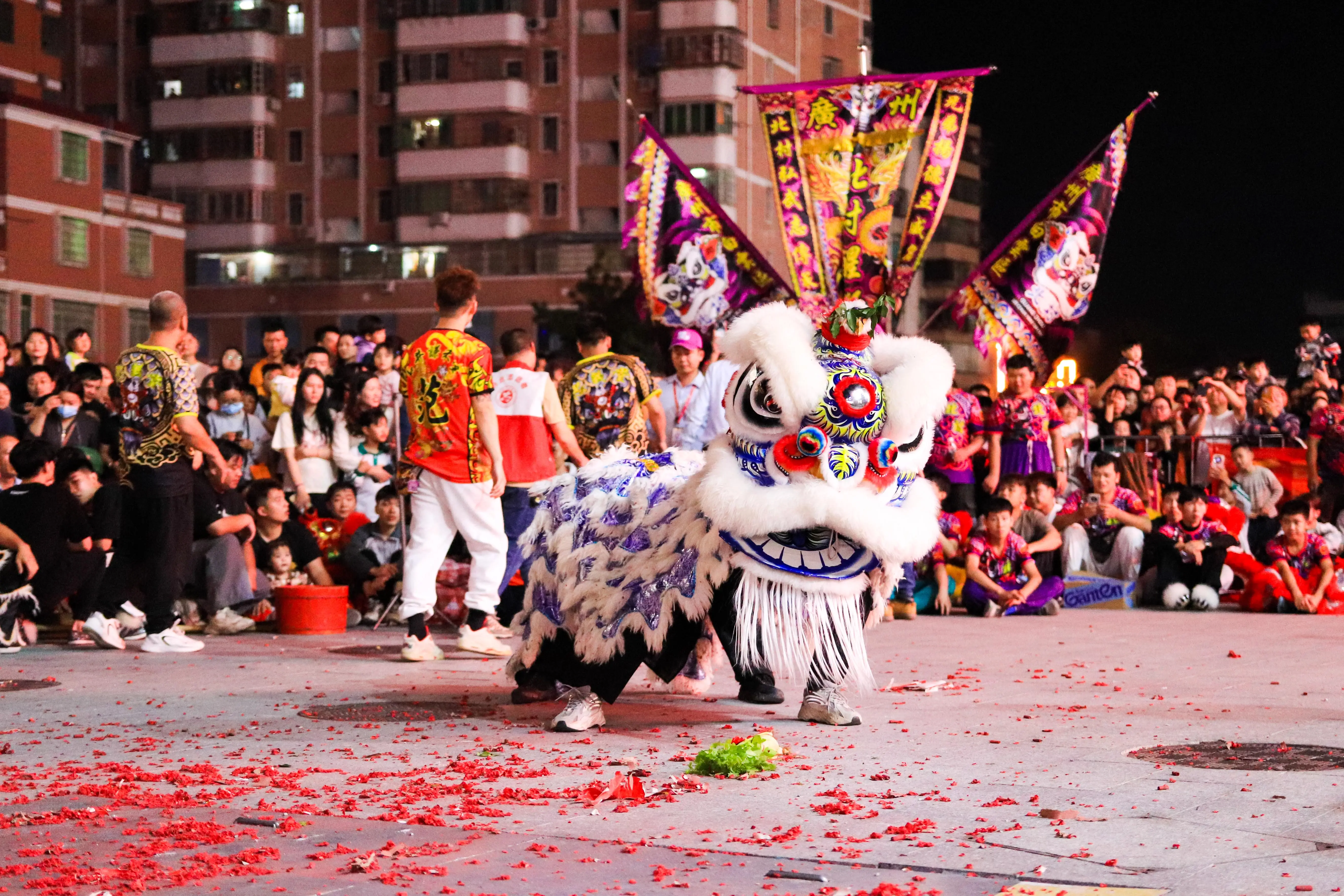
Origin and History
Guangdong Lion Dance, also known as Southern Lion, is an excellent traditional folk art of China, originating in the Song Dynasty and flourishing during the Ming and Qing Dynasties. According to historical records, Lion Dance was introduced to the folk from the Tang Dynasty court lion dance and developed in combination with Lingnan culture.
Regarding the origin of Lion Dance, there is a widely流传的民间传说:Legend has it that during the Ming Dynasty, a monster appeared in Guangdong, harming the people. Later, people discovered that lions could drive away this monster, so they imitated the lion's form and movements, creating the Lion Dance performance. Since then, Lion Dance has become a symbol of exorcism, warding off disasters, and praying for peace.
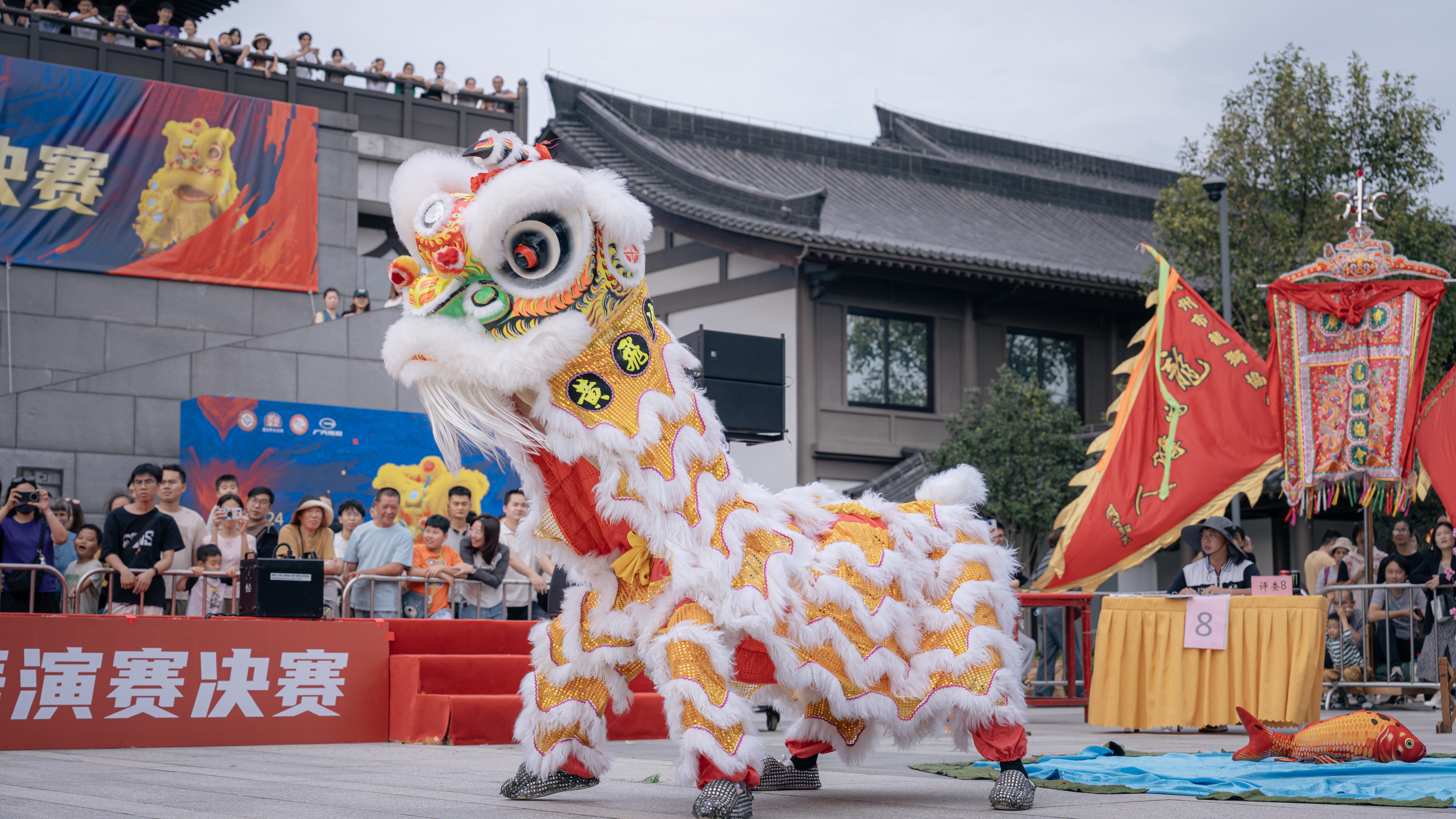
During the Ming and Qing Dynasties, as Cantonese people went to Southeast Asia to make a living, Lion Dance culture spread to Chinese communities in Southeast Asia, Europe, America, and other regions. Today, Lion Dance has become an important bond connecting overseas Chinese with their motherland culture. In 2006, Guangdong Lion Dance was included in the first batch of national intangible cultural heritage list, receiving broader protection and inheritance.
Artistic Features
Guangdong Lion Dance integrates various artistic elements such as martial arts, dance, and music, with distinct Lingnan cultural characteristics. The lion image is mighty and magnificent, with bright colors, usually in three basic colors: red, yellow, and black, representing Guan Gong, Liu Bei, and Zhang Fei respectively, symbolizing loyalty, benevolence, and bravery.
Lion Dance performances emphasize both form and spirit, vividly displaying the lion's various expressions and emotions through movements such as blinking, shaking the head, licking fur, and rolling. The coordination between the lion head and lion tail performers is crucial during the performance, requiring a high level of tacit understanding and exquisite skills.
Main Artistic Features of Lion Dance:
- Unity of Form and Spirit: Not only imitating the lion's form but also emphasizing the expression of its spirit and emotions
- Exquisite Skills: Integrating martial arts techniques, with strong and powerful movements, thrilling and exciting
- Music Coordination: Accompanied by percussion instruments such as drums, gongs, and cymbals, with a lively rhythm and warm atmosphere
- Profound Meaning: Each movement has a specific meaning, such as "Cai Qing" symbolizing attracting wealth and treasures
- Bright Colors: The lion body features bright colors and exquisite patterns, with strong visual impact
Performance Routines
Guangdong Lion Dance has rich and diverse performance routines, mainly including "Cai Qing" (Plucking the Green), "High Platform Performance", "Pile Array Performance", etc. Among them, "Cai Qing" is the core part of Lion Dance performance, symbolizing attracting wealth, treasures, and good fortune.
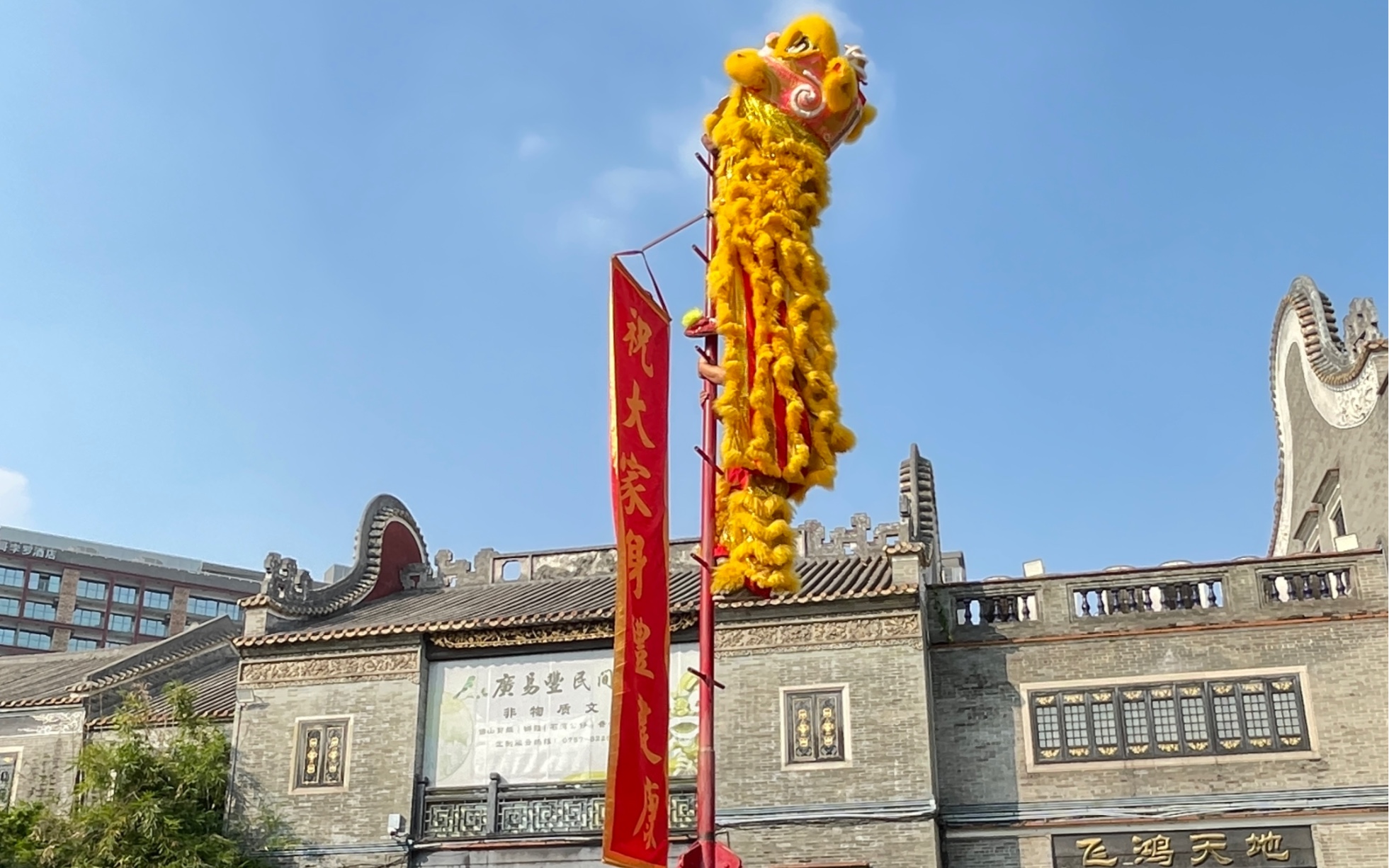
Cai Qing Performance
Cai Qing is the most representative routine in Lion Dance performances. Usually, a green vegetable (symbolizing wealth) is hung at a high place, and the lion needs to "pluck" the vegetable through movements such as jumping and climbing. The entire process is thrilling and captivating, fully demonstrating the performers' courage and skills.
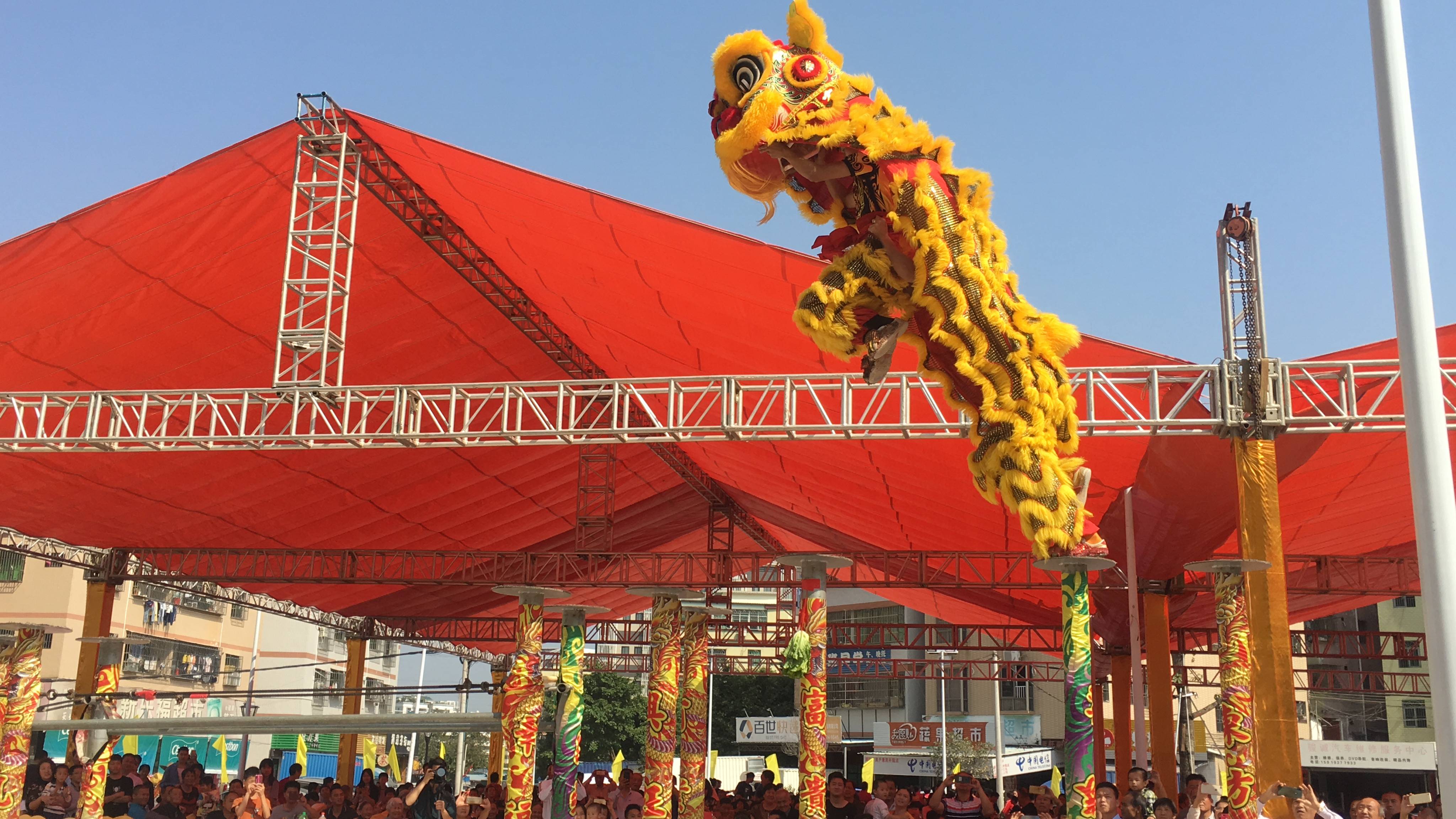
High Platform Performance
High Platform Performance is a highly difficult movement in Lion Dance. The lion needs to perform various skillful movements on stacked high platforms. The platforms are usually stacked with several or even dozens of long benches, reaching several meters in height. Performers need to complete movements such as jumping and flipping on the high platforms, making it highly ornamental and challenging.
"Lion Dance performance is not just an art form, but also a cultural heritage, carrying the wisdom and spirit of the Lingnan people." — National Inheritor of Guangdong Lion Dance
Cultural Connotations
Guangdong Lion Dance is not only a folk art but also an important part of Lingnan culture, with rich cultural connotations. It symbolizes the spirit of bravery, unity, and progress, embodying the positive attitude towards life of the Lingnan people.
In traditional festivals and joyous occasions, Lion Dance performances are indispensable. People believe that Lion Dance can drive away evil spirits, ward off disasters, and bring good luck and fortune. Through Lion Dance performances, people express their yearning and pursuit for a better life.
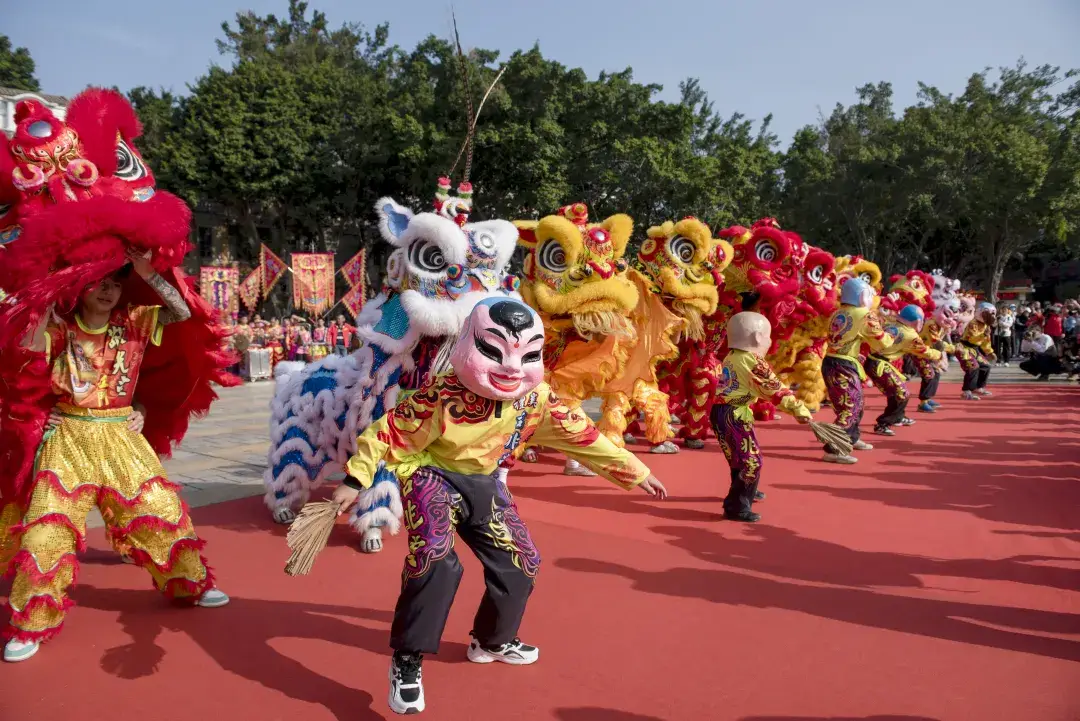
Lion Dance culture also reflects the cohesion and creativity of the Chinese nation. In overseas Chinese communities, Lion Dance performances are an important bond connecting Chinese culture and an important window showcasing the charm of Chinese culture. Through Lion Dance performances, overseas Chinese can not only feel the warmth of their hometown but also enhance their national pride and identity.
Inheritance and Development
In recent years, with the development of society and changes in people's lifestyles, Lion Dance culture faces challenges in inheritance and development. To protect and inherit this excellent intangible cultural heritage, governments at all levels in Guangdong and relevant departments have taken a series of measures, such as establishing Lion Dance inheritance bases, organizing Lion Dance competitions and performances, and incorporating Lion Dance culture into school education.
At the same time, many Lion Dance groups are actively exploring innovative development paths for Lion Dance culture. On the basis of preserving traditions, they incorporate modern elements, creating a number of Lion Dance performance programs with the characteristics of the times, attracting more young people's attention and participation.
Main Ways of Lion Dance Inheritance:
- Family Inheritance: Passing down from generation to generation within families, maintaining the purity of skills
- Master-Apprentice Inheritance: Teaching skills through master-apprentice relationships, which is a traditional way of inheritance
- School Education: Incorporating Lion Dance culture into school physical education and art education, cultivating a new generation of inheritors
- Social Popularization: Improving the social influence of Lion Dance culture by holding competitions, performances, and other activities
- Media Dissemination: Expanding the dissemination scope of Lion Dance culture through television, internet, and other media platforms
Famous Teams and Activities
There are many famous Lion Dance teams in Guangdong, such as the Foshan Wong Fei-hung Lion Dance Team, Guangzhou Workers' Lion Dance Team, Shenzhen Dragon and Lion Association, etc. These teams not only enjoy a high reputation domestically but also represent China in international cultural exchange activities many times, making important contributions to the dissemination of Chinese culture.
During the Spring Festival every year, grand Lion Dance performances are held in various parts of Guangdong. Among them, the most famous ones include the Lion Dance performance at the Foshan Ancestral Temple Fair and the Lion Dance performance at the Guangzhou Spring Flower Market. These activities not only attract a large number of local citizens but also many domestic and foreign tourists.
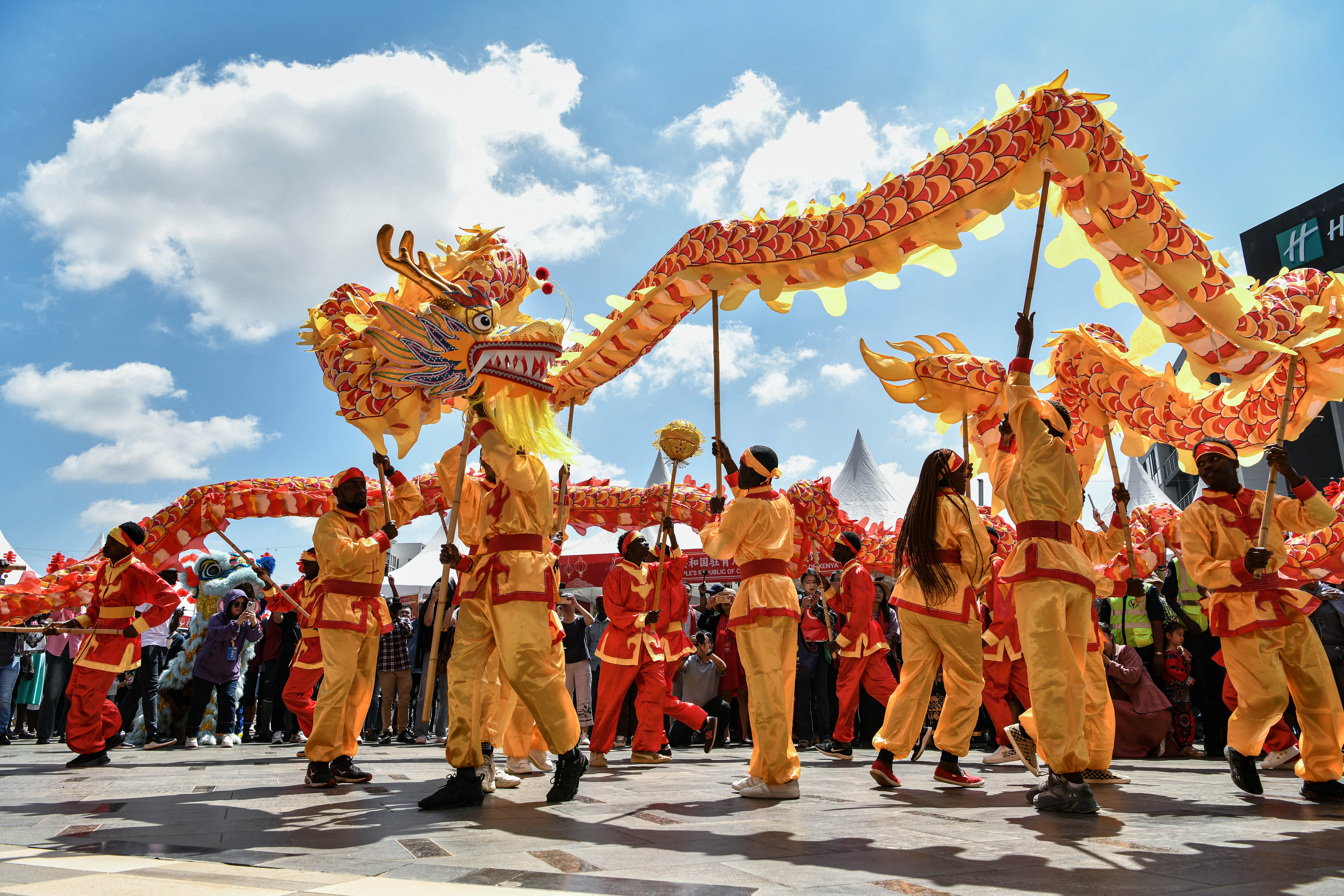
In addition, Guangdong also regularly holds Lion Dance competitions, such as the Guangdong Traditional Lion Dance Championship and the Guangdong-Hong Kong-Macao Greater Bay Area Lion Dance Invitational Tournament. These competitions are not only platforms for exchanging Lion Dance skills but also important carriers for the inheritance and development of Lion Dance culture.